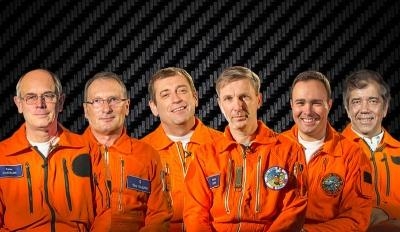Sat, Jun 15, 2013
Aircraft And Its Engines Perform 'Excellently'
The first A350 XWB to fly landed back at Toulouse-Blagnac Airport France at 1405 hours local time Friday after successfully completing its first flight that lasted four hours and five minutes (245 minutes).

The aircraft was flown by Peter Chandler, Airbus’ Chief Test Pilot, and Guy Magrin, Project Pilot for the A350 XWB. Accompanying them in the cockpit was Pascal Verneau, the A350 XWB Project Test Flight Engineer. Monitoring the progress of the flight profile were the three flight test engineers: Fernando Alonso, Head of Airbus Flight & Integration Test Centre; Patrick du Ché, Head of Development Flight Tests; and Emanuele Costanzo, lead Flight Test Engineer for the Trent XWB engine.
“I congratulate the whole A350 XWB development team for having completed the first flight preparation in a record time," said Airbus President and CEO Fabrice Bregier. "I also wish to thank the first flight crew today for taking this aircraft where it wants to be – in the sky.” He added: “I would also like to extend my gratitude to all our teams in the design offices, at program and manufacturing level, the ground crews as well as our colleagues in airlines and suppliers and many others who helped define this all-new aircraft. The A350 XWB which has flown today (Friday), integrating the latest available technologies, is now entering the final stage of its development. And it is ready. Ready to head towards certification and entry-into-service in the second half of next year.”

For its first flight, the A350 XWB – carrying the registration F-WXWB – took off at around 243 tons. During the flight, which took the aircraft around south western France, the crew explored the aircraft’s flight envelope. The aircraft was accompanied by a chase plane to observe and film the various maneuvers. Its progress was monitored by experts on the ground in real-time via a direct telemetry link. This maiden flight marks the beginning of a rigorous test flight campaign involving five A350s, and around 2,500 flight hours. It will culminate in the aircraft’s certification followed by its entry into airline service in the second half of 2014.
(Images provided by Airbus)
More News
“This vote sends an undeniable message to Air Transat management: We are unified, resolute, and have earned a contract that reflects today’s industry standards, not the>[...]
Aero Linx: Beech Aero Club The Beech Aero Club (BAC) is the international type club for owners and pilots of the Beech Musketeer aircraft and its derivatives, the Sport, Super, Sun>[...]
While Landing In The River, The Extended Landing Gear Contacted The Water And The Airplane Nosed Over, Resulting In Substantial Damage Analysis: The pilot of the amphibious airplan>[...]
From 2022 (YouTube Edition): Carrying the Legacy of The B-29 For Generations to Come We had a chance to chat with the Executive Director of B-29 Doc, Josh Wells, during their stop >[...]
Also: Cosmonaut Kicked Out, Airbus Scales Back, AF Silver Star, Russian A-60 Clobbered A Samaritan’s Purse humanitarian flight was hijacked on Tuesday, December 2, while atte>[...]
 Aero-News: Quote of the Day (12.07.25)
Aero-News: Quote of the Day (12.07.25) ANN's Daily Aero-Linx (12.07.25)
ANN's Daily Aero-Linx (12.07.25) NTSB Final Report: Lafferty Jack Sea Rey
NTSB Final Report: Lafferty Jack Sea Rey Classic Aero-TV: The B29 SuperFortress Doc - History in Flight
Classic Aero-TV: The B29 SuperFortress Doc - History in Flight Airborne 12.08.25: Samaritans Purse Hijack, FAA Med Relief, China Rocket Fail
Airborne 12.08.25: Samaritans Purse Hijack, FAA Med Relief, China Rocket Fail




